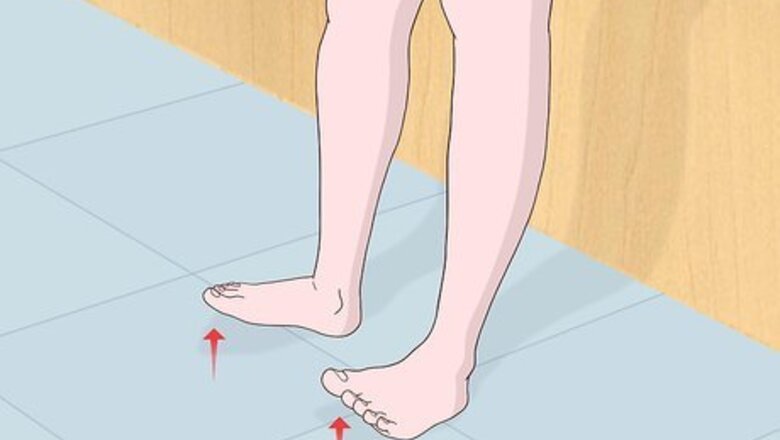
views
Stepping Exercises
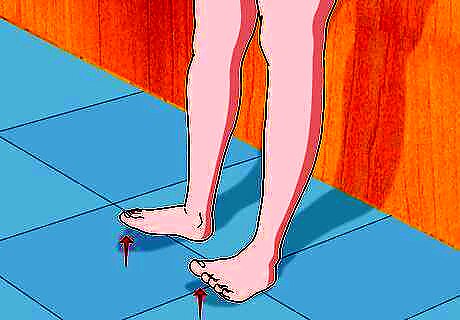
Do wall shin raises. These are simple exercises to stretch your shins while resting your back against a wall. As long as you have a solid background for support, you can do them just about anywhere. Stand with your shoulders, back, and butt up against a wall. Place your feet away from the wall, with your heels about one foot-length in front of you. Keeping your heels on the ground, raise your toes upward. Stretch as far as possible. This is called dorsiflexion. Slowly lower your toes back toward the ground, but don’t let them touch the floor. Repeat the exercise with 10–15 reps. Once you have finished the reps, let your feet back on the floor for a quick rest, then do one or two more sets.
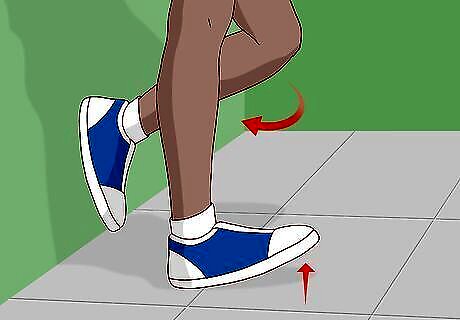
Do single leg raises. This exercise is very similar to the wall shin raise, but using only one foot at a time. It is a big more difficult because you will only be supporting yourself on one leg. This is a good exercise to build to after regular wall shin raises. Stand with your back against the wall, and rest one foot lightly against the wall. Dorsiflex with the foot on the ground for 10–15 reps. Once you are finished, switch your feet and repeat on the other leg. Because you are only using one leg at a time, you don’t need to rest between switching your legs.
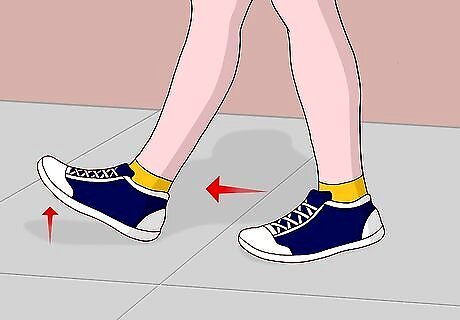
Do heel step-downs. This is a simple exercise that you can do without a wall. You’ll be doing the same kind of dorsiflexion as the wall stand, but this time while simulating a walk. Stand up straight, not leaning against anything, with your feet about shoulder-width apart. Take a step forward, making sure only your heel plants. The step should be a normal size, so about how long you would take while walking. Hold your toes in the air, making sure the ball of your foot doesn’t get any closer than an inch to the floor. Step back to the starting position. Repeat this step with the same foot for 10–15 reps, then switch to the other leg. One variation on this exercise is to try walking around the room on your heels. Just make sure you walk very slowly, and maintain your balance. If you start to feel like you are losing your balance, rest your toes on the ground to settle.

Do a seated shin stretch. This is a simple stretching exercise you can do anywhere. You’ll probably want to be on a softer surface since you are on the floor. Get on the floor, resting on your knees. Stretch out your feet so that your toes are pointed behind you with the tops of your feet on the floor. Gently lean backward, pushing down on your heels to stretch out the front of your leg. Hold the stretch for 30 seconds, then repeat three times. If you want to increase the stretch, do one leg at a time to increase the weight. You can also try lifting up your knees to further increase the resistance.
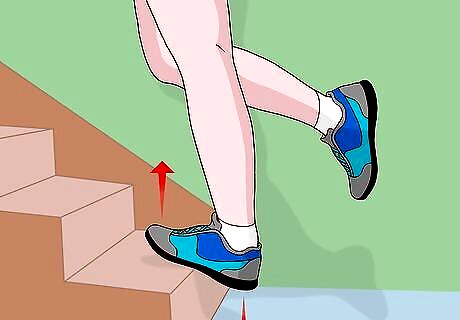
Do some heel drops. These are simple exercises that use a ledge, like a step, to provide some resistance to your foot. This is probably best to do on the bottom of a staircase, or on a small platform, rather than using a step on the top of your stairwell. Stand with your toes on the edge of a step. Make sure you have something nearby to balance yourself. Shift your weight on to one leg (say the right), then lift the other foot (the left) off of the step. Lower your right heel downward, making sure your toes point upward. Return to your starting position, then switch legs and repeat with the other foot.
Using Accessories

Do toe curls. These are simple exercises you can do with a towel on the floor. Just make sure your feet are firmly planted on the floor. You can hold on to something for balance if you need it. Stand at the edge of the towel with your feet hip-width apart. Use the toes on one foot to gather the edge of your towel and pull it toward you. Push the towel back into position. Repeat with your other foot.
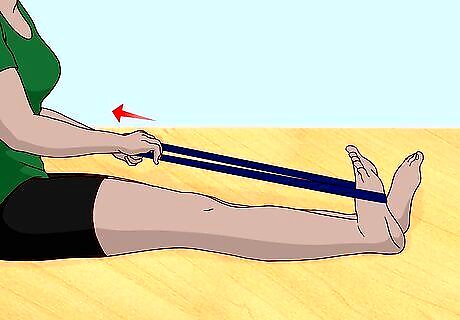
Do calf stretches. This exercise uses an exercise band to help pull your toes toward you. This action strengthens the shin muscle. You can also use a towel in place of the band if you don’t have one. Sit on the floor with your legs straight out in front of you. Loop the exercise band around the bottom of your feet, near the arch. Gently pull the band back into dorsiflexion, that is raising your toes upward toward your shins as far as possible, and hold that position for 10–15 seconds. Repeat two to three times on the same foot, then switch to the other leg. You can switch legs between reps, but it will probably be quicker not to keep swapping the band around each foot. The exercise band you use for this and other shin exercises should be a strip design, which will wrap around your foot and ankles. When purchasing your band, consider the resistance based on your current fitness level. If you are already active, and working on your shins to improve your current workout, you’ll want to consider bands with heavy resistance, for average untrained men or active women, or extra-heavy resistance, for active men and strong women.
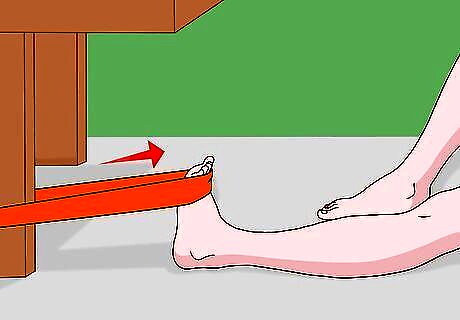
Do a shin resistance exercise. This exercise uses the band and a fixed object to help extend your lower leg. Your foot will use the band as resistance to pull against when flexing. All you need is the exercise band and something solid you can wrap it around. Sit on the floor with your legs stretched out in front of you. Make sure your toes are pointed up toward the ceiling. Loop the exercise band around the top of your foot and a stationary object. This can be a table leg, or anything else that will stay securely in place. Dorsiflex your foot against the resistance, pulling your toes back against the band. Repeat for 10–15 reps, then switch legs. For increase the resistance, you can build to using a heavier band, or doubling your reps to 20–30 per leg.
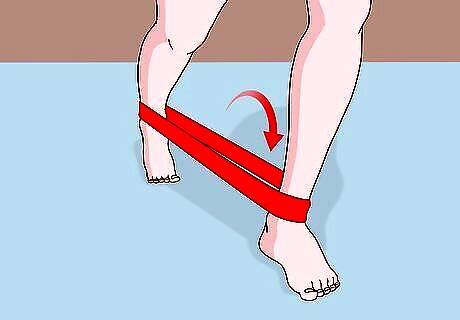
Do a monster walk. If you have a little bit more space to do some walking, you can use the resistance band to stretch by taking steps. This will help stretch your shins and hip abductor muscles. Stand up, placing your feet shoulder-width apart. Wrap the resistance band around your ankles or thighs. Step forward and to the right with your right leg. Then bring your left leg forward so that it is even with the right. Take a step backward toward your original position, then bring your other leg back to even. If you have the space, you can take several steps forward before going backward. Just remember to alternate your lead foot for each forward step.


















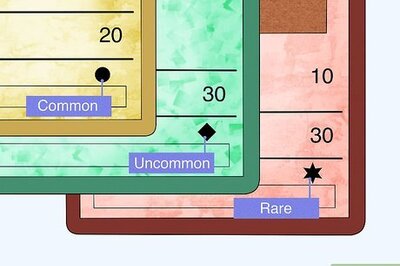

Comments
0 comment